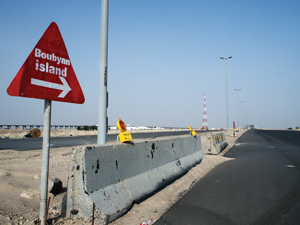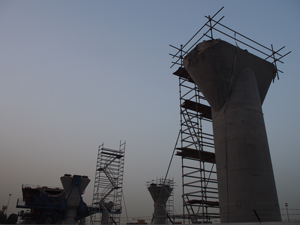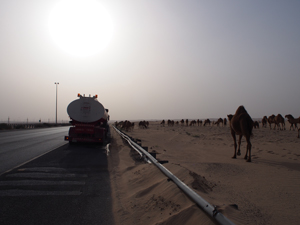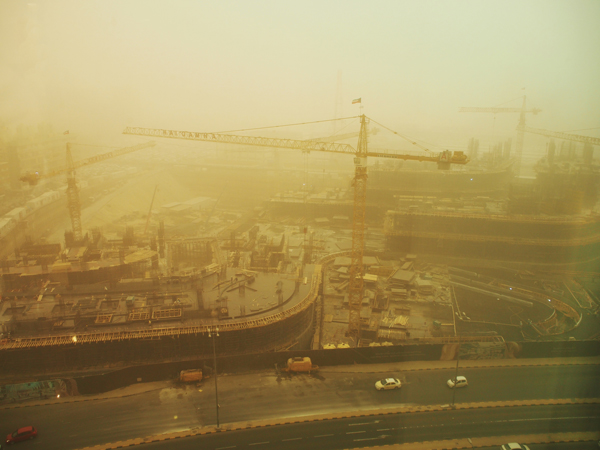 |
|
|
|
IN ADDITION |
|
If any one group can be expected to seize upon every opportunity for optimism, it is marketing officers. Yet the long-standing head of marketing at one of Kuwait’s leading financial institutions fails to show much enthusiasm during a recent interview with Euromoney.
Kuwait’s emir, Sabah Al-Ahmad Al-Jaber Al-Sabah, had a few weeks earlier announced a grand new plan to radically transform the country into a: “Financial, cultural and institutional leader in the region by 2035”. But the marketing man doubts the plan will be realized.
He welcomes Euromoney to his offices in Kuwait City on March 13, the third day of a dust storm that clouds the Kuwaiti capital’s air, making it hard to breathe.
When asked about New Kuwait, the name given to this latest reform programme, he sighs: “A lot of people didn’t buy into it. They want actions, not more words.” He says past programmes, which set similarly ambitious targets, didn’t lead to substantial change.
To illustrate his point, our contact walks to a cupboard in his office and pulls out a 130-page report produced by Gulf Investment House in 2010. The report was, as the dedication page explains, meant as: “A modest contribution towards achieving his vision of transforming Kuwait into a distinguished and distinctive regional financial and commercial centre”. The marketing man suggests the same report could be written today and be just as relevant.
By 2010, the emir and his predecessor had already been talking for years about the need to make oil-rich Kuwait into a financial hub to rival Dubai, the Middle East’s prime banking and trading centre. Two projects encapsulating that ambition were conceived more than a decade ago. One was Silk City, a sprawling new city in northern Kuwait, complete with a financial centre and what would be the tallest skyscraper in the world; the other was a port on nearby Boubyan Island. Silk City alone was to cost, by one official estimate, $77 billion.
Asked if these mega-projects have been built yet, or even begun, the banker is downbeat: “Until now, nothing has been done.”
For that reason, financial professionals have come to doubt the timeline for reform.
“A five-year plan takes 20 years,” the head of a Kuwaiti bank says about the pace at which things happen in the country. “They say 2035? Make it 2050.”
New Kuwait is struggling to generate much enthusiasm.
 |
| Sheikh Mohammad Abdullah Al-Mubarak Al-Sabah |
Announced on January 30 at Sheikh Jaber Al-Ahmad Cultural Centre, the recently opened opera complex overlooking Kuwait Bay in central Kuwait City, New Kuwait was meant to herald the start of a new era for the country. In his opening address, the minister of state for cabinet affairs, Sheikh Mohammad Abdullah Al-Mubarak Al-Sabah, did his best to sell the new plan. “Today we launch initiatives that will transform our economy, create jobs, attract foreign direct investments and facilitate knowledge transfer in the fields of renewable energy, information technology and the services sector,” he said. “Today we launch a consolidated and comprehensive strategy that will empower and inspire the country for generations to come.”
Perhaps in an attempt to pre-empt the criticism that New Kuwait was just a rehash of previous such plans, he called this new iteration achievable and measurable. The government launched a website that gives the estimated year of completion for each project and measures how close to completion each one is. The port on Boubyan Island is said to be 47% done, while the Kuwait International Airport expansion – also a long-standing project – is at 0%. There is no mention of Silk City.
Organizers say the event in January was attended by prominent leaders of Kuwait’s private sector, including those from investment and banking, commerce, retail, services and communications. Diplomats, entrepreneurs and representatives of various government entities were also present, they say.
But whatever goodwill led to their attendance was in scant display when Euromoney visited Kuwait a few weeks later. The head of one large Kuwaiti bank says he refuses to even read the vision laid out in New Kuwait, because his experience has shown that such plans never materialize. The banker, who calls the matter sensitive and declines to go on the record, says that paying attention to it would be a waste of time.
Euromoney struggles to find businessmen who wholeheartedly believe in it. Faisal Hasan, chief business development officer and head of investment research at Kuwaiti investment company Kamco, is one of the few to declare himself optimistic about the prospects laid out in the vision. But when pressed, he too says execution may be slow. When asked why such an announcement was even necessary, since it repeats much of what had already been announced, Hasan says it offers “a new perspective for projects that are in the works”.
In other words, Kuwait is reasserting its commitment to various projects and moving the completion dates further into the future.
The local press dutifully reported on the Emir’s “ambitious” strategy. But international media, which last year extensively covered a similar announcement made by Saudi Arabia, Vision 2030, hardly bothered to cover New Kuwait. A rare piece on MENA business news website, Zawya, called New Kuwait “déjà vu”.
Indifference
The lack of interest shown in the 2035 strategy by foreign journalists did not go unnoticed in Kuwaiti business circles. A senior manager at Kuwait Oil Company, a subsidiary to Kuwait’s national oil corporation, says it is not just a reflection of the relative sizes of Saudi Arabia and Kuwait. The manager, who himself is a firm believer in New Kuwait, says: “Frankly speaking, it’s because they don’t take us seriously. They don’t think we’ll do it.”
It is striking to see so many of the same bankers and businessmen who do not take New Kuwait seriously do largely believe in Saudi Arabia’s ‘Vision 2030’. In other words, they do not distrust the concept of setting ambitious long-term goals per se, just Kuwait’s claims that it can deliver them.
One banker says of Vision 2030: “Yes, I believe it. Because there are brand new faces and they’ve started work, for example on the IPO of Saudi Aramco.”
In Saudi Arabia, the young deputy crown prince Mohammed bin Salman Al-Saud has emerged as the energetic and committed champion of the Kingdom’s reform programme; in Kuwait it is unclear who is championing the idea. If it is the emir himself, many will wonder how a man who has been talking about reform for over a decade now, would suddenly become an effective implementer.
A source who works in the oil sector and has recently spoken to Sheikh Nasser, the emir’s son and minister of the Ruler’s Court, suggests Nasser may be the Kuwaiti equivalent of Saudi Arabia’s Mohammed bin Salman. But if Nasser is behind this new push, he has so far failed to publicize his role.
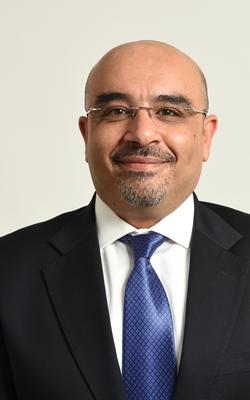 |
| Rani Selwanes, NBK Capital |
Nevertheless, Rani Selwanes, the head of investment banking at NBK Capital, says he feels 2017 could be the year Kuwait makes great strides towards its objectives. He says the New Kuwait announcement at the start of the year and the successful issuance of Kuwait’s debut $8 billion sovereign bond in March should lead to substantial progress on various projects. But he adds that the success of the bond issue does not in itself indicate that international investors have bought into the 2035 strategy – unlike Saudi Arabia’s debut in October, which indicated that investors had bought into Vision 2030.
Indeed, had there been no New Kuwait announcement, Selwanes speculates, the bond would have proved just as popular. What investors were buying into was some yield from an oil-rich sovereign that can cope with a low oil price, regardless of whether the issuer can deliver reform.
Kuwait’s leaders have, in each of the emirate’s development plans, voiced the same objectives: the reduction of the country’s dependency on oil export revenue; the creation of a business environment in which private businesses can thrive and foreign investors feel welcome; the development of transport infrastructure; the improvement of education and healthcare; greater government transparency and efficiency and the bettering of general living and labour conditions.
Familiar goals
For observers of the Gulf, the list of goals will sound familiar, as they are largely shared by the region’s other oil-rich states.
Various business leaders and bankers in Kuwait tell Euromoney they agree that the country should strive toward those targets. They suggest that achieving them is a necessary, if not a sufficient, condition for the country to become the financial hub it hopes to be.
They quickly add that Kuwait has faced structural problems for many years and for many years has been vowing to address them. Meshaal Al Saleh, a former banker at Commercial Bank of Kuwait and NBK Capital, and now a student of finance at the University of Cambridge, says of the emirate’s development plans: “Kuwait has a history of announcing grand projects, but rarely they go as planned.”
Al Saleh goes on to cite the example of some Kuwait University facilities, which he says were announced more than 30 years ago, yet have still not been completed. The planned development of Boubyan Island has also been discussed for the past 30 years, another banker says.
Evidence of chronic delay abounds in Kuwait. As far back as 2005, Fawzi Sultan, an economic consultant to Kuwait, identified the same key targets for development as now exposed in the New Kuwait programme. And when asked about the transformation of Kuwait into “a trade, logistics and financial hub”, as demanded by the country’s then prime minister and now emir, Sultan said: “We are late.” Of the need to get the reforms enacted quickly, he added: “Why wait?”
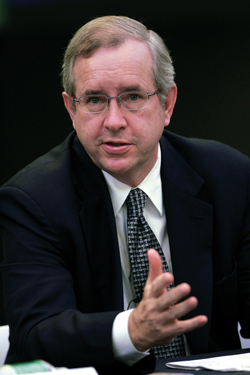 |
| Richard LeBaron |
Writing two years after that, Richard LeBaron, then US ambassador to Kuwait, suggested little progress had been made. “A number of major state-sponsored infrastructure projects have been delayed for periods ranging from three to 10 years,” he wrote, “for a variety of political and bureaucratic reasons.” He cited the port of Boubyan Island, Silk City and the causeway linking Kuwait City and Silk City as examples of mega-projects that “continue to languish”. In an interview with Euromoney in 2010, the then governor of the central bank of Kuwait, Sheikh Salem Al-Sabah, said: “We believe we can [become an international financial centre] via legislation, amendments and preparing the infrastructure.” Before adding: “For many different reasons, we have been a little bit delayed.”
Analysts at Stratfor, the geopolitical intelligence and advisory firm, used similarly coy language just weeks before the announcement of New Kuwait, when they wrote in a report on the emirate: “Although Kuwait’s government laid out its most recent and serious reform campaign back in 2010, it is in no real hurry to see the initiatives through.”
There are several reasons for the constant delays. The most important is that, thanks to the sheer amount of revenue generated from oil exports, Kuwait simply has not felt any real urgency to change its habits. The Kuwait Investment Authority, the emirate’s sovereign wealth fund, has become one of the biggest in the world on the back of oil revenues.
A former senior banker at NBK, who left Kuwait in 2011, recalls little excitement around the previous reform programme announced in 2010. “While the oil price was high,” he says, “the attitude tended to be that you could buy your way to the future.” In other words, why dramatically reorganize society and its sources of funding when money is so readily available?
Oil price
Even over the past couple of years, as the price of oil has fallen from about $100 a barrel to half that, Kuwait still has had the funds to delay reforming itself. Stratfor’s analysts argue the country’s substantial foreign exchange reserves and massive sovereign wealth fund have buffered it from the fallout of low oil prices and given it “the luxury to pursue reform at a snail’s pace”. Despite the halving of the oil price and the fact that 90% of Kuwait’s fiscal revenues come from sales of oil, the emirate is still expected to have a budget surplus this year. That is because the oil price at which Kuwait can balance its budget is the lowest in the region – around $50 a barrel. All other Gulf states are expected to have a deficit this year.
For all its drawbacks, Kuwait stands out as the most democratic of the Gulf states. Unlike its neighbours, the emirate has an elected parliament which holds real power. There are opposition MPs who regularly and openly disagree with the emir and his government. But instead of being praised for its contribution to the advancement of Kuwait, the parliament is sometimes accused by business leaders of slowing the country down.
In recent years, as parliament and government have clashed, the emir has repeatedly dissolved the assembly: three times between 2011 and 2013 and once again in October 2016. At least 25 of the 65 parliamentarians currently in office have been described as being in the opposition. Those MPs could yet oppose the emir on various points of his 2035 reform agenda. Parliament has not yet examined, or approved, New Kuwait.
So consistent is the production of expert studies focused on the need to reform Kuwait, and so inconsistent is the actual delivery of the reforms proposed, that it seems that consultants are the real beneficiaries of Kuwait’s reform programmes.
In 2009, Kuwait hired Tony Blair Associates, the consulting firm created by the former UK prime minister, to produce a study into the future of the Kuwaiti economy. What was publicized of the recommendations made in the study closely resemble those still being discussed today. According to ‘The wonderful world of Tony Blair’, a documentary broadcast on Channel 4 in 2011, Blair’s company was paid as much as KD12 million ($39 million) for its services. A spokesperson for the firm said the amount cited was incorrect.
The analysis produced by Blair’s firm is said to have followed another, similar report by management consulting business McKinsey. And, of course, there was also the 2010 Gulf Investment House report.
PR stunt?
The endless reports produced by consultants and governmental committees, whose work usually culminates in a grand statement of purpose, raise the question: is this all just a public relations stunt? The rhetoric fools few observers of Kuwait or the oil sector.
In early March, Paddy Blewer, head of PR at bunker business Peninsula Petroleum, tweeted, in response to news that Kuwait wanted to lessen its oil revenue dependence: “I can feel a ‘vision’ coming on, followed by a #PR agency telling a story about Kuwait’s modernization & innovation agenda. #cynical.” A cynical view, perhaps, but one that is increasingly hard to counter.
Kuwait’s rivals do not take the country’s grand announcements all that seriously either. A senior regulator at Dubai International Financial Centre says so many firms are now settled in Dubai that they are unlikely to uproot themselves and move to Kuwait, especially since many expats prefer the quality of life in Dubai. The regulator adds: “You want to launch your financial centre at the bottom of the up slope,” meaning when economic conditions are looking up, which is not the case at the moment. “A lot of international players are not there to be attracted right now.”
In an interview with Euromoney, LeBaron, former US ambassador to Kuwait, agrees: “They’ll never catch up with Dubai or Abu Dhabi,” he says of those in Kuwait hoping to match the success those two emirates have had in building financial centres. “It’s just more interesting to live in those places.”
The head of the Kuwaiti bank also thinks the moment has passed. “Maybe if they’d acted 15 or 20 years ago, it might have worked,” he says. “But now it’s too late.”
Financial professionals in Kuwait sometimes like to say, as a symbol of the emirate’s missed opportunities, that the country stands out for being the first in the region to found a stock exchange, but the last to found a capital markets authority. Although it was once ahead, Kuwait eventually fell behind. It may struggle to get anywhere near the front again.
The long and winding road to Boubyan Island
Silk City is perhaps the project most emblematic of Kuwait’s desire to become a regional financial centre and the most evocative of its failure to achieve that goal.
|
|
The vision statement for the new city, published in 2006, grandly described an urban centre “founded on the rich heritage of Arab gardens, towns, palaces and markets”. The statement continued: “It balances Centres of Faith with Centres of Commerce as a rich garden city on the Arabian Gulf.”
Silk City was to comprise four centres – Finance City, Leisure City, Culture City and Ecological City – and be “a new cosmopolitan city for a new century”. Designs showed a sprawling metropolis with, at its centre, a skyscraper projected to be nearly 200 metres taller than Dubai’s Burj Khalifa, the tallest in the world.
On its recent visit to Kuwait, Euromoney decided to head north out of Kuwait City, to see what, if anything, there was in the northern part of the country, where plans from over a decade ago said Silk City should be built, as well as a port on nearby Boubyan Island, at a total cost of over $100 billion.
Drivers are reluctant to travel toward Boubyan – the island is a sensitive area disputed by neighbouring Iraq, and outside Kuwait City there are still unexploded landmines from the Gulf War of 1990/91 – but Euromoney finds one willing to do the trip. Only a small portion of the long hoped-for causeway destined to link Kuwait City to Silk City across Kuwait Bay has yet been built, so one can only reach Boubyan Island and its surrounding area by taking the long route, the motorway that goes round the bay, through the desert.
“This is the last area of Kuwait,” the driver says as we pass Jahra, a suburb of Kuwait City, as if we were entering a no man’s land. He has never ventured farther.
It takes close to an hour and a half to reach our destination, which feels long in a country as small as Kuwait. The long road to Boubyan, a motorway with three lanes running either way, is virtually empty. Along the road there is nothing but desert. One road near Boubyan has been closed long enough that it is now completely covered in sand.
Close to the island there is a sign that indicates one is entering a construction site supervised by the ministry of public works’ megaprojects sector. The sign gives 2011 as the completion date, yet around us nothing appears to have been built. There is little evidence of a Silk City construction site, even one in its early stages.
|
|
As for the port on Boubyan Island, we do not get to see how much of it has been built; the bridge that leads to the island is barred by a checkpoint. A guard turns us away.
He says that the island is an “army area” and that we need authorization from the military to enter. Asked how much of the port has so far been built, he says only the groundwork has been done and adds that it will be at least another five years before there is much more to see there.
According to the original plan, Silk City should by now be half-way done and be completed by 2023. Satellite images of the site where the new city was to be constructed confirm that nothing of note has yet been built. Contacted over LinkedIn, Anne Lucas, an architect at CivicArts, the firm that designed Silk City, seems unsure whether the project will ever see the light of day. “I was not even aware that the project was actually being built (or is it?),” she writes. And she adds, of the extremely slow pace of the project: “That’s pretty much the norm [in the region]. Delays are often random and political.”
Later, Euromoney learns that Silk City is officially still in the works. A “joint technical team” has been set up to look into a draft law on the Silk City authority, a Kuwaiti banker says. As for the Boubyan Island project the Supreme Council for Planning and Development is said to be working on feasibility studies, engineering designs and investment laws. More patience is required, it seems.
It is clear that financial institutions are not holding their breath for Silk City. Rather than wait for the opening of this grand new financial hub to build their headquarters, NBK and the Kuwait Investment Authority are building new skyscrapers in Kuwait City.
In discussing the potential impact mega-projects such as Silk City will have on Kuwait’s economic prospects and its international standing, some have dropped the gloves completely. Apparently disillusioned with the slow progress of these plans, a professional relationship officer for a local finance house tweeted last year: “You know someone is bullshitting when they cite ‘Kuwait Railroad’ and Silk City in their feasibility study as potential for growth.”
|
|
On the way back to Kuwait City, we find a herd of dromedaries being guided along the motorway through the desert. The herders, a young Sudanese man on foot and an older Indian man on horseback, offer to milk one of the animals for us. Where the “new cosmopolitan city for a new century” was meant to be built is empty for miles around. Silk City is still just an idea.
As the head of a Kuwaiti bank puts it: “Things are not going as planned, but they are going as expected. Because expectations are not very high.”
